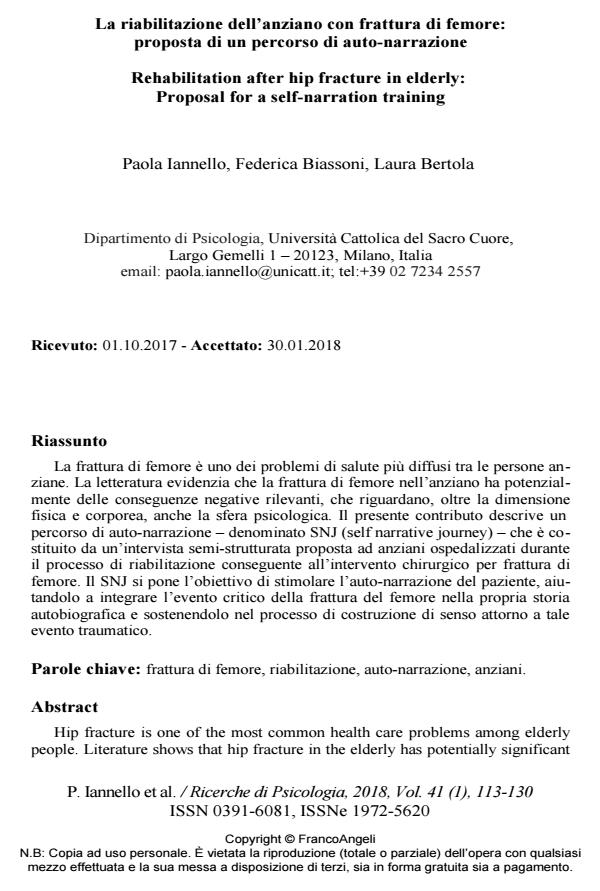Rehabilitation after hip fracture in elderly: Proposal for a self-narration training
Journal title RICERCHE DI PSICOLOGIA
Author/s Paola Iannello, Federica Biassoni, Laura Bertola
Publishing Year 2018 Issue 2018/1
Language Italian Pages 12 P. 113-124 File size 234 KB
DOI 10.3280/RIP2018-001009
DOI is like a bar code for intellectual property: to have more infomation
click here
Below, you can see the article first page
If you want to buy this article in PDF format, you can do it, following the instructions to buy download credits

FrancoAngeli is member of Publishers International Linking Association, Inc (PILA), a not-for-profit association which run the CrossRef service enabling links to and from online scholarly content.
Hip fracture is one of the most common health care problems among elderly people. Literature shows that hip fracture in the elderly has potentially significant negative consequences, which concern, beyond the physical and bodily dimen-sion, also the psychological one. The present contribution describes a self-narrative training - named Self-Narrative Journey (SNJ) - which consists of a semi-structured interview proposed to hospitalized elderly people during the in-hospital rehabilitation after hip fracture surgery. The SNJ aims to stimulate the self-narrative of the patient, helping him integrate the critical event of hip fracture into his autobiographical history and supporting him in the process of making sense of this traumatic event.
Keywords: Hip fracture, rehabilitation, self-narration, elderly.
Paola Iannello, Federica Biassoni, Laura Bertola, La riabilitazione dell’anziano con frattura di femore: proposta di un percorso di auto-narrazione in "RICERCHE DI PSICOLOGIA " 1/2018, pp 113-124, DOI: 10.3280/RIP2018-001009